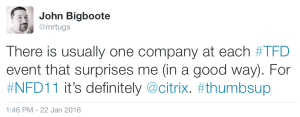Ansible up and running
After much delay – I’ve finally found time to take a look at Ansible. I’ve spent some time looking at possible platforms to automate network deployment and Ansible seems to be a favorite in this arena. One of the primary reasons for this is that Ansible is ‘clientless’ (I’m putting that in quotes for a reason, more on that in a later post). So unlike Chef, Puppet, and Salt (Yes – there are proxy modes available in some products) Ansible does not require an installed client on the remote endpoints. So let’s get right into a basic lab setup.
While the end goal will be to use Ansible to automate network appliances, we’re going to start with the a more standard use case – Linux servers. The base lab we will start with is two servers, one acting as the Ansible server and the second being a Ansible client or remote server. Both hosts are CentOS 7 based Linux hosts. So our base lab looks like this…

Pretty exciting right? I know, it’s not, but I want to start with the basics and build from there…
Note: I’ll refer to ansibleserver as Continue reading


 OpenStack for NFV will be production-ready in 2016 based on development blueprints of documented telecom, OPNFV, and ETSI NFV requirements.
OpenStack for NFV will be production-ready in 2016 based on development blueprints of documented telecom, OPNFV, and ETSI NFV requirements.



 ARM's 64-bit push is underway, but will the data center be interested?
ARM's 64-bit push is underway, but will the data center be interested?